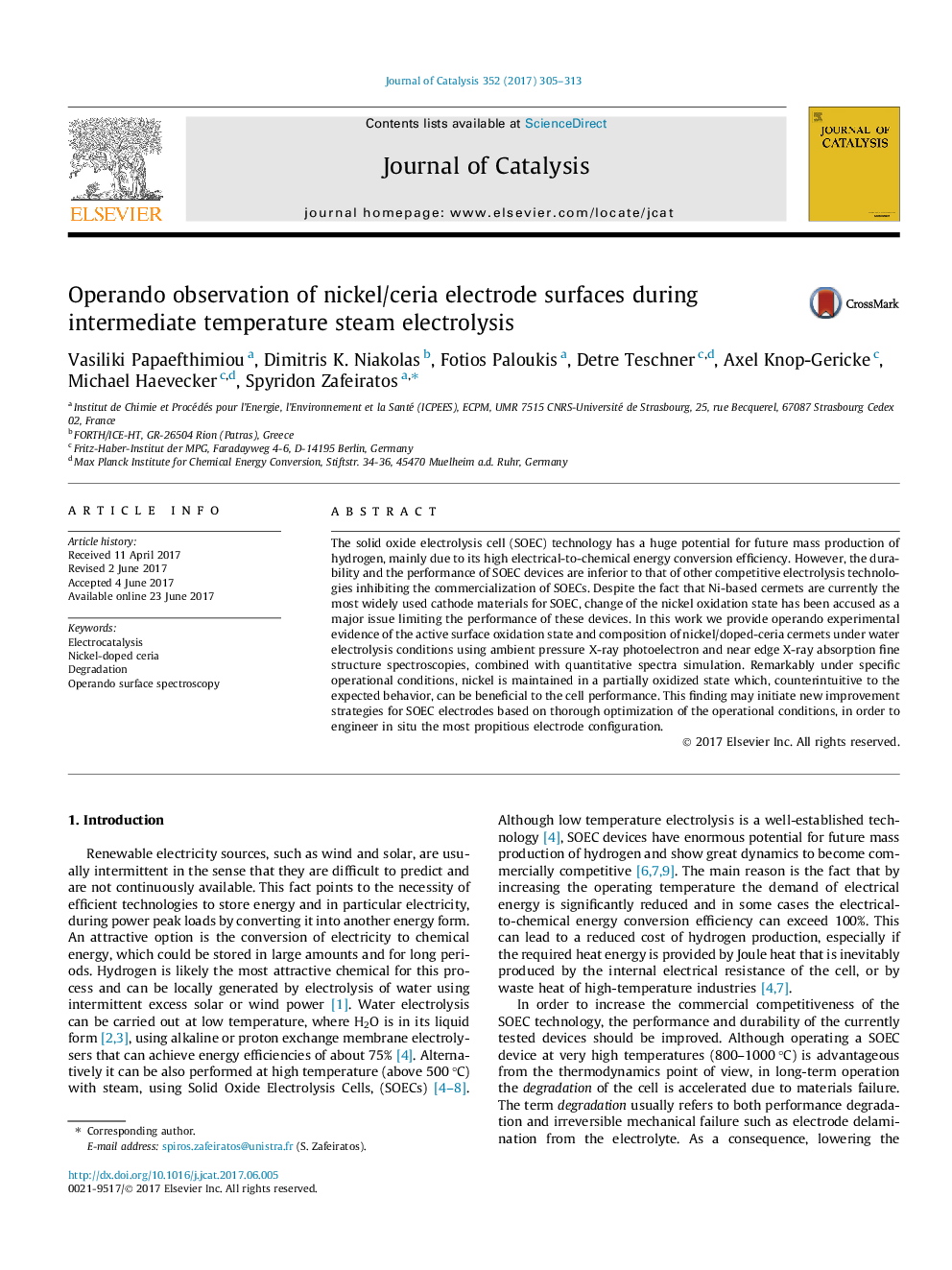| Article ID | Journal | Published Year | Pages | File Type |
|---|---|---|---|---|
| 6455399 | Journal of Catalysis | 2017 | 9 Pages |
â¢H2O electrolysis over Ni/GDC cermet electrodes was investigated by APXPS and NEXAFS.â¢The Ni/GDC surface is dynamic and adapts to the fuel composition and the bias voltage.â¢(NiO-CeO2)-core/(Ni-CeO1.5)-shell morphology is formed under 100% steam operation.â¢Reduced-shell boosts conductivity while oxidized-core prevents particles coarsening.
The solid oxide electrolysis cell (SOEC) technology has a huge potential for future mass production of hydrogen, mainly due to its high electrical-to-chemical energy conversion efficiency. However, the durability and the performance of SOEC devices are inferior to that of other competitive electrolysis technologies inhibiting the commercialization of SOECs. Despite the fact that Ni-based cermets are currently the most widely used cathode materials for SOEC, change of the nickel oxidation state has been accused as a major issue limiting the performance of these devices. In this work we provide operando experimental evidence of the active surface oxidation state and composition of nickel/doped-ceria cermets under water electrolysis conditions using ambient pressure X-ray photoelectron and near edge X-ray absorption fine structure spectroscopies, combined with quantitative spectra simulation. Remarkably under specific operational conditions, nickel is maintained in a partially oxidized state which, counterintuitive to the expected behavior, can be beneficial to the cell performance. This finding may initiate new improvement strategies for SOEC electrodes based on thorough optimization of the operational conditions, in order to engineer in situ the most propitious electrode configuration.
Graphical abstractDownload high-res image (95KB)Download full-size image
